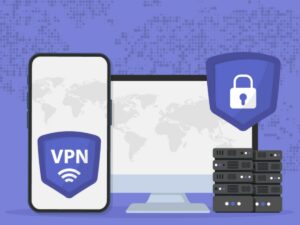
In today’s hyper-connected world, the internet has become an indispensable lifeline, seamlessly integrating into every aspect of our lives. From communication and entertainment to education and business, the importance of reliable internet connections cannot be overstated. In this blog, we embark on an illuminating journey to decode the enigmatic world of internet connection types: Fiber, Cable, and DSL. As technology races forward, these three contenders have emerged as the most prevalent and sought-after choices for internet users worldwide. By delving into their unique mechanisms, strengths, and weaknesses, we aim to equip you with the knowledge needed to make an informed decision tailored to your specific needs. Whether you crave lightning-fast speeds for bandwidth-hungry tasks, rock-solid reliability for critical work, or cost-effectiveness without compromising on performance, this comprehensive comparison will be your ultimate guide to untangle the complexities and choose the perfect internet connection for your digital endeavors. Let’s dive in and uncover the magic that keeps us all connected!
Section 1: What are Fiber, Cable, and DSL?
In the ever-evolving landscape of internet connectivity, understanding the fundamental building blocks is essential. So, what are Fiber, Cable, and DSL, and how do they work? These three distinct internet connection types play pivotal roles in shaping our online experiences as Internet providers in Milwaukee and beyond bring them to life. Fiber-optic internet utilizes ultra-thin strands of glass or plastic to transmit data using pulses of light, boasting unparalleled speed and bandwidth capabilities. On the other hand, Cable internet relies on coaxial cables to deliver data, leveraging the same infrastructure as cable television, while DSL (Digital Subscriber Line) utilizes traditional copper telephone lines for data transmission. Each method has its unique set of principles governing data transfer, determining factors such as speed, reliability, and coverage. As we delve into their historical development, we uncover how these connection types have surged in popularity, dominating specific regions and shaping the digital landscape for millions worldwide.
Section 2: Speed and Bandwidth:
In the fast-paced realm of internet connectivity, three formidable contenders stand out: Fiber, Cable, and DSL. These cutting-edge technologies define the way we access and experience the online world. Let’s dive into the speed capabilities of each internet connection type, where Fiber reigns supreme as the Usain Bolt of the digital highway, offering lightning-fast speeds that surpass the competition. Cable follows closely, offering impressive speeds ideal for smooth streaming and online gaming, while DSL, though reliable, tends to lag behind in the speed race. But speed alone is not the sole determinant of a seamless online experience; bandwidth plays a crucial role. The wider the bandwidth, the more data can be transmitted simultaneously, directly influencing internet performance and user satisfaction. Real-world examples and comparisons will be our guide, illustrating how a Fiber-powered household can stream high-definition content, video conference, and download large files without a hiccup, while DSL users may experience occasional slowdowns during peak hours. By understanding these differences, readers will be empowered to choose the perfect internet connection that aligns with their digital needs and aspirations.
Section 3: Reliability and Stability:
When it comes to internet connectivity, reliability and stability are the bedrocks upon which seamless online experiences are built. As we explore the offerings of Fiber, Cable, and DSL connections from the perspective of the best internet provider in Milwaukee, a comprehensive evaluation awaits. Fiber, with its advanced infrastructure of optical cables, emerges as a sturdy and unwavering champion, providing consistent performance even during peak usage times. Cable, although robust, can face challenges when sharing bandwidth with other users in the same neighborhood, resulting in occasional dips in stability. Meanwhile, DSL’s dependence on copper telephone lines makes it susceptible to interference, impacting its overall reliability. In our pursuit of understanding connection stability, we’ll delve into the factors that come into play, such as adverse weather conditions and network congestion. Additionally, armed with statistical data and insightful studies, we’ll paint a clear picture of the uptime and downtime experiences users may encounter across these connection types, empowering our readers to make well-informed decisions for their internet needs.
Section 4: Coverage and Availability:
In the digital era, where connectivity is the lifeline of our daily lives, the topic of “Coverage and Availability” takes center stage. As we traverse through the vast expanse of internet landscapes, the availability of Fiber, Cable, and DSL connections becomes a crucial consideration for users seeking seamless online experiences. While Fiber internet shines as a futuristic beacon, its reach is often limited to urban areas, leaving suburban and rural regions yearning for its lightning-fast speeds. Cable, on the other hand, boasts broader coverage, weaving through numerous neighborhoods to provide reliable service. DSL, a veteran in the connectivity game, remains widely accessible but may suffer from speed limitations in certain distant locales. The challenges of expanding and upgrading infrastructure for each connection type add complexity to the equation, ranging from regulatory hurdles to the cost-intensive nature of such endeavors. Yet, there is hope. Our blog will equip readers with valuable tips and tricks to check the availability of these connections in their specific area, ensuring that everyone can explore the best internet options tailored to their needs and geographical location. Let’s bridge the digital divide and unlock the true potential of connectivity for all!
Section 5: Performance during Peak Hours:
In the bustling realm of online activities, the performance of internet connections during peak hours takes center stage, especially for avid users seeking uninterrupted digital experiences. As we delve into the realm of internet providers in Little Rock , we uncover how Fiber, Cable, and DSL connections fare during these critical moments of high demand. Fiber, the frontrunner in speed and reliability, maintains its top-notch performance even when everyone is vying for bandwidth. Cable, while formidable, may experience occasional congestion issues due to shared connections in densely populated areas, resulting in slight dips in internet speeds. DSL, though dependable, can face challenges during peak hours, affecting its performance. Understanding potential congestion issues and how they influence internet speeds is vital to optimizing online experiences. To ensure users conquer peak-time woes, we offer valuable suggestions, from smart bandwidth management to scheduling downloads during off-peak hours. By arming our readers with this knowledge, we empower them to navigate the digital rush and maintain unparalleled performance throughout their online ventures.
Section 6: Pricing and Cost Comparison:
In the dynamic world of internet connectivity, where options abound, the topic of “Pricing and Cost Comparison” becomes a decisive factor in the pursuit of an ideal internet plan. As we navigate through the realm of Fiber, Cable, and DSL plans, the diversity in pricing and offerings emerges. Comparing the cost of each connection type, we unravel the unique value they bring to the table. Fiber, with its premium price tag, boasts unmatched speeds and unwavering reliability, making it a top contender for those seeking the ultimate online experience. Cable, a more budget-friendly option, strikes a balance between speed and cost, catering to a wide array of users. DSL, known for its affordability, may not match the blistering speeds of its counterparts but remains a dependable choice for budget-conscious individuals. Analyzing the value-for-money aspect based on speed and reliability helps readers understand the trade-offs they can expect from each plan. Armed with this knowledge, we offer sage advice to our readers, guiding them to choose the most suitable internet plan that aligns seamlessly with their budget and unique requirements, ensuring a satisfying online journey without breaking the bank.
Section 7: Upload and Download Speeds:
In the realm of home internet providers in Milwaukee, a crucial aspect that distinguishes the digital experience lies in “Upload and Download Speeds.” Understanding the disparities between these two types of speeds is key to unlocking seamless online interactions. Fiber, the frontrunner in high-speed connectivity, typically offers symmetrical upload and download speeds, ensuring smooth video conferencing, flawless cloud backups, and effortless file sharing. Cable, while impressively fast in downloads, often lags behind in uploads, making it less optimal for activities requiring consistent two-way data transmission. DSL, though reliable, generally offers lower upload speeds compared to its counterparts. Acknowledging the significance of upload speeds in activities like video conferencing and online gaming is vital, as they directly impact the real-time exchange of information. Whether it’s collaborating with colleagues across the globe or dominating opponents in virtual battlegrounds, a robust upload speed empowers users to make the most of their online ventures. So, before making the leap, grasping these nuances will ensure you secure an internet connection that fulfills your needs, both in the digital and real world.
Section 8: Latency and Ping:
In the fast-paced digital universe, the often overlooked but crucial aspect that governs online experiences is “Latency and Ping.” Understanding the concept of latency and its impact on various activities like gaming and video streaming is akin to unveiling the hidden secret behind a seamless online journey. Latency refers to the delay in data transmission between your device and the server, and in activities where split-second decisions matter, such as gaming or real-time video conferencing, low latency becomes paramount. Fiber, with its lightning-fast transmission capabilities, emerges as the undisputed king in the latency realm, ensuring minimal delays and instantaneous responsiveness. Cable, though commendable, may experience slight lags, while DSL, with its copper lines, may exhibit comparatively higher latency levels. But fret not, for we have tips in store for each connection type to mitigate latency issues and optimize your online performance. From using wired connections for gaming to optimizing router settings, these valuable suggestions will pave the way for a seamless and lag-free digital adventure, ensuring you stay ahead in the virtual race. Embrace the power of low latency and unlock the true potential of your online endeavors!
Section 9: Future Prospects and Upcoming Technologies:
As Internet companies in Milwaukee and beyond continue to innovate, the horizon of “Future Prospects and Upcoming Technologies” for Fiber, Cable, and DSL is ablaze with exciting possibilities. The relentless pursuit of faster and more reliable connections has led to promising advancements in each technology. Fiber, already the epitome of speed, could witness further enhancements in data transmission rates, ushering in a new era of unparalleled internet experiences. Cable, too, is not far behind, as researchers explore methods to boost its efficiency and deliver even higher speeds. Meanwhile, DSL, despite being an established player, might see improvements in its infrastructure to better compete in the ever-evolving market. Beyond the traditional triumvirate, emerging internet connection technologies, such as satellite internet and 5G, could disrupt the landscape with their far-reaching coverage and impressive speeds. These advancements hold the potential to revolutionize internet connectivity, bridging the digital divide and ensuring seamless access for users worldwide. As we peer into the future, we envision a connected world where barriers dissolve, and the internet becomes a catalyst for progress, empowering individuals and businesses alike to thrive in an interconnected ecosystem.
Conclusion:
In this enlightening journey through the world of Fiber, Cable, and DSL, we have unraveled the intricacies of internet connection types to equip readers with the knowledge they need to make informed decisions. As we approach the conclusion, let’s recap the key takeaways discussed in the blog. We explored the differences in speed, reliability, and coverage of each connection type, understanding how they perform during peak hours and the significance of upload and download speeds in various online activities. Delving into the realm of latency and its impact on gaming and video streaming, we discovered tips to reduce latency issues for each connection type. As we bid farewell, let us emphasize the paramount importance of selecting the right internet connection tailored to individual needs. Whether it’s Fiber for blazing-fast speeds, Cable for a balanced performance, or DSL for budget-conscious users, choosing wisely ensures a seamless online journey that empowers users to thrive in today’s interconnected world. So, heed our personalized advice, align your choice with your unique requirements, and embark on a digital adventure that knows no bounds!





